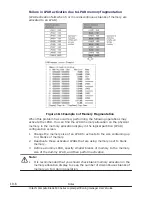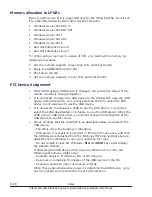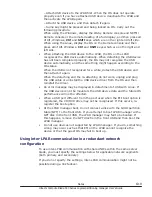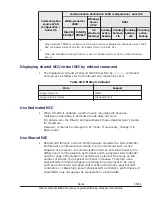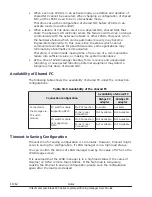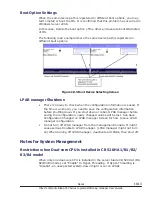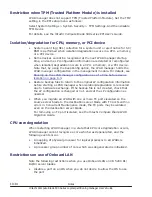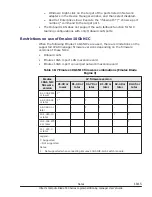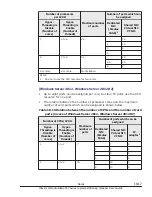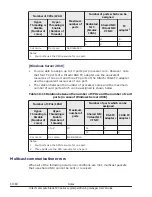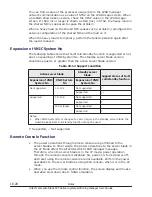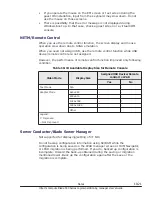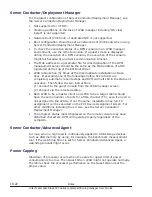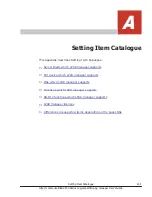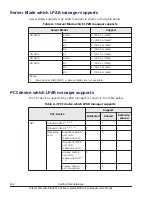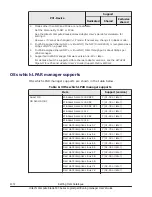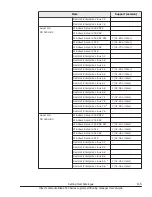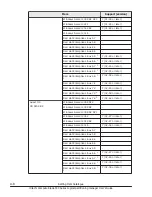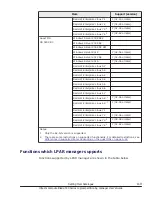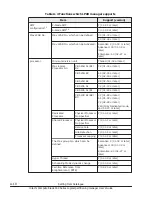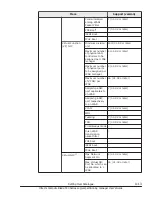
You can find a value of the processor usage rate in the LPAR manager
network communication as a value of SYS2 on the LPAR Usage screen. When
a problem shown above occurs, check the SYS2 value on the LPAR Usage
screen. If 1800 ms or larger is shown as Dsp (ms) in SYS2, the heavy load on
the shared NIC is supposed to cause the problem.
When a heavy load on the shared NIC causes such a problem, reconfigure the
network configuration of the shared NIC and the load on it.
When the heavy load is temporary, perform the failed operation again after
the load is relieved.
Expansion of VNIC System No
The following table shows that N+M cold standby function is supported or not
due to expanding of VNIC System No. The standby server blade version
should be equal to or greater than the active server blade version.
Table 10-12 Support condition
Active server blade
Standby server
blade
Support status of N+M
cold standby function
Expansion of VNIC
System No
VNIC System
No
Expansion of VNIC
System No
Not supported
1 to 128
Not supported
Y
Supported
Y
1
Supported
1 to 128
Not supported
-
Supported
Y
129 or larger
Not supported
-
Supported
Y
Notes:
1
.
When VNIC System No is changed to 129 or larger in the standby server blade, the
switching back N+M cold standby function cannot be used.
Y: Supported, -: Not supported
Remote Console Function
•
The power operations through remote console are performed to the
server blades. In other words, the power operations to the server blade in
the LP Mode effect the all LPARs which LPAR manager manages.
Therefore, when the server blade is in the LP mode, power operation
through the remote console is disabled. So, power-on, forced power-off,
and reset using the remote console are not available. Perform the power
operations to the server blade by using Web console, when it is in the LP
mode.
•
When you use the remote control function, the screen display and mouse
operation slow down due to SVGA emulation.
10-20
Notes
Hitachi Compute Blade 500 Series Logical partitioning manager User's Guide

